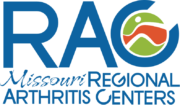We’re just over six weeks into 2016 now. We hope your New Year’s was reinvigorating or relaxing, depending on your inclination.
Speaking of New Year’s… Now’s a good time to reassess your short- and medium-term goals for the year. Consider this your friendly reminder to check up on yourself.
Our last post looked at routines. Routines we know are series of repeated actions followed regularly.
Most of us follow several routines every day, starting with our wake up routine, which usually includes getting out of bed, making a cup of coffee or tea, getting dressed, eating breakfast, and brushing teeth, if not necessarily in that order.
One step in a routine flows naturally into the next, it’s almost automatic. Like driving a car on a long trip, routines disappear without us noticing; we just do them. Like hitting a pothole, a disruption in routine snaps us out of autopilot.
While an unexpected break in routine is usually unwelcome, breaking a routine intentionally can be exhilarating and fun. Break a routine long enough and you’ve started a new routine.
On the topic of routines, last year researchers from Cornell University conducted a study examining the health effects of regular sitting, in this case of workers sitting at computers.
The researchers tested sitting desks, standing desks, and alternating between the two.
Each option offered tradeoffs. Standing desks burned roughly 20% more energy than sitting desks, for example, but standing desks also caused foot fatigue and excess wrist extension.
Ultimately, the researchers concluded that “simply standing [in one place] is insufficient” as an antidote to sitting. Their advice? “Sit [while working…], then every 20 minutes stand for 8 minutes AND MOVE for 2 minutes.”
More importantly for our purposes, they recommend people “build in a pattern of creating greater movement variety [during work]”
This pattern-building is what routines are all about. And patterns of greater movement, which is to say regular exercise, are the basis of good health.
‘Pattern building’ is a bit vague, so let’s get concrete with an action plan:
- What? [Specific action YOU want or decide to do]
- How much? [Time of day] on [day(s) of the week]
- How often? [Number of days in the week]
The more specific your answers to What?, How much?, and How often?, the more achievable they will be. Setting achievable, actionable goals is also unsurprisingly at the root of the Steps to Better Health exercise classes and free resources we offer.
Changing our routines one step at a time is the surest (and safest) way to build new physical capacities. And compared to expensive standing desks or exercise equipment, as the researchers note, “movement is FREE!” Indeed, of the new capacities we can build, one of the best is the capacity to change our relationship to our health!
